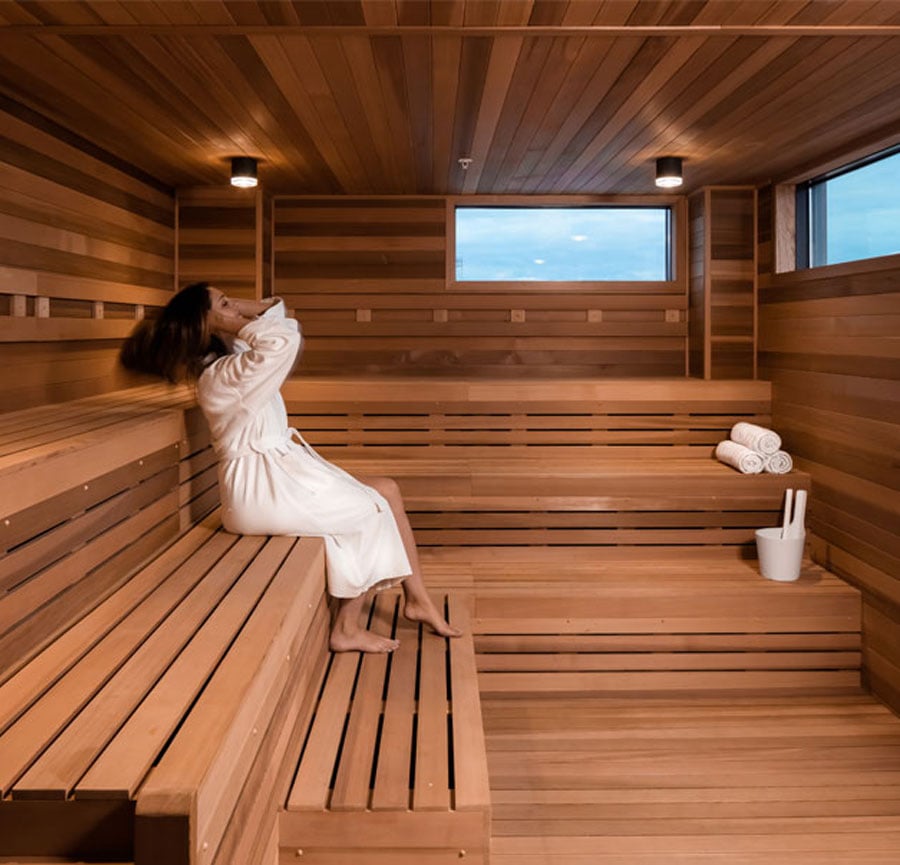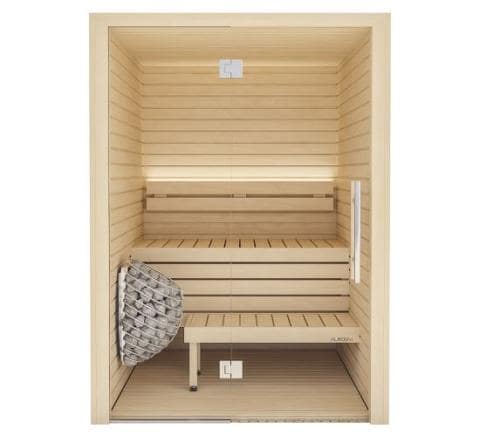Getting My Traditional Sauna To Work
Getting My Traditional Sauna To Work
Blog Article
Our Traditional Sauna Ideas
Table of ContentsLittle Known Facts About Traditional Sauna.The Best Strategy To Use For Traditional SaunaTraditional Sauna - QuestionsA Biased View of Traditional SaunaRumored Buzz on Traditional Sauna
A lot of the weight lost in a sauna is water loss and is re-gained upon rehydrating. Nonetheless, undeniably sauna can be a vital part of a healthy weight loss program. To take a look at the distinctions in between traditional and IR saunas, I will certainly divide these into proven, theoretical, and produced differences.Hence, the best factor in the saunawhich is at the ceiling directly above the sauna heateris commonly in between 185 and 190 F. Claims that a traditional sauna goes beyond 200 F is merely not real and not applicable for electric saunas offered in the US. The temperature level for a far-infrared sauna is usually established in between 120 and 140 F; nevertheless, unlike the standard sauna, the goal in and IR space is not to accomplish a heat.
Due to the fact that of this, the temperature level difference is nearly pointless, since excessive sweating leads to both sauna types, however the technique of heating the body is different. In an IR sauna the bather will really feel warm and will certainly sweat profusely, however at much reduced temperatures (Traditional Sauna). Hence, if the objective is to spend longer time periods in the sauna, the IR sauna is a great choice
When a conventional sauna has actually been appropriately heated, the sauna wall surfaces are cozy, the air temperature level has actually accomplished set temperature and the rocks are extremely heated. As an intriguing side note, the warmed wall surfaces and the rocks are releasing far-infrared heat, combined with the heated air, to produce an "enveloping warm".
What Does Traditional Sauna Mean?

When the high temperature is achieved, the aspects cycle on and off to maintain the high temperature. Most traditional sauna users appreciate putting water over the rocks to develop steam to elevate sauna humidity levels. The advantages of pouring water over the rocks include: making the area more comfy, moistening the nasal flows, and permitting the use of aromatherapy by mixing necessary oils with the water.

When the power gets in the body, it causes news the body temperature level to increase and ultimately results in sweat. In an infrared sauna it is very important for the emitters/heaters to remain on almost frequently. Given that there is no mass of rocks to maintain warmth, the sauna will cool down if the emitters turned off.
As stated above, the sauna bather in an infrared room intends to place himself in front of running emitters to get optimal take advantage of the heat. The home heating time for both spaces can be extremely various, depending on just how the rooms are utilized. For a standard sauna, a bather needs to enable 30-40 mins for the area to attain a wanted temperature level and to appropriately pre-heat the rocks.
The Only Guide for Traditional Sauna
A well constructed sauna will normally achieve a temperature level of 150-160 F in regarding 30-40 mins. For hotter temperatures, the area may need to warmth for a longer period.

Traditional saunas tend to be larger (thus utilize more electrical energy) than infrared saunas, although typical saunas are absolutely readily available in one and 2 individual sizes as well. For a two-person visit this web-site standard sauna, 5x6 or 5x7 size is most prominent. The leading bench can conveniently seat 2 or three people and is likewise enough time to relax throughout the sauna session.
The smart Trick of Traditional Sauna That Nobody is Discussing
The average expense per kWH of power in the united state is roughly $0.11, so a 4.5 kW heating system will certainly cost approximately $.50 to compete one hour, if the heater runs constantly for one hour. Usually a sauna heating unit will certainly compete 75% of the very first hour and 50% of succeeding hours on given that the components cycle once the established temperature level is attained.

There is a seldom discussed distinction in the social experience in between the two rooms. While our culture has actually shed a few of the social advantage of the standard sauna experience, it can be very socially fulfilling (Traditional Sauna). From family time in the sauna, to heart-felt discussions with loved ones, to sauna partiesthe standard sauna experience can lead to intimate socializing
How Traditional Sauna can Save You Time, Stress, and Money.
Many greater end infrared rooms include colored light treatment, sound systems and full-glass fronts.
Report this page